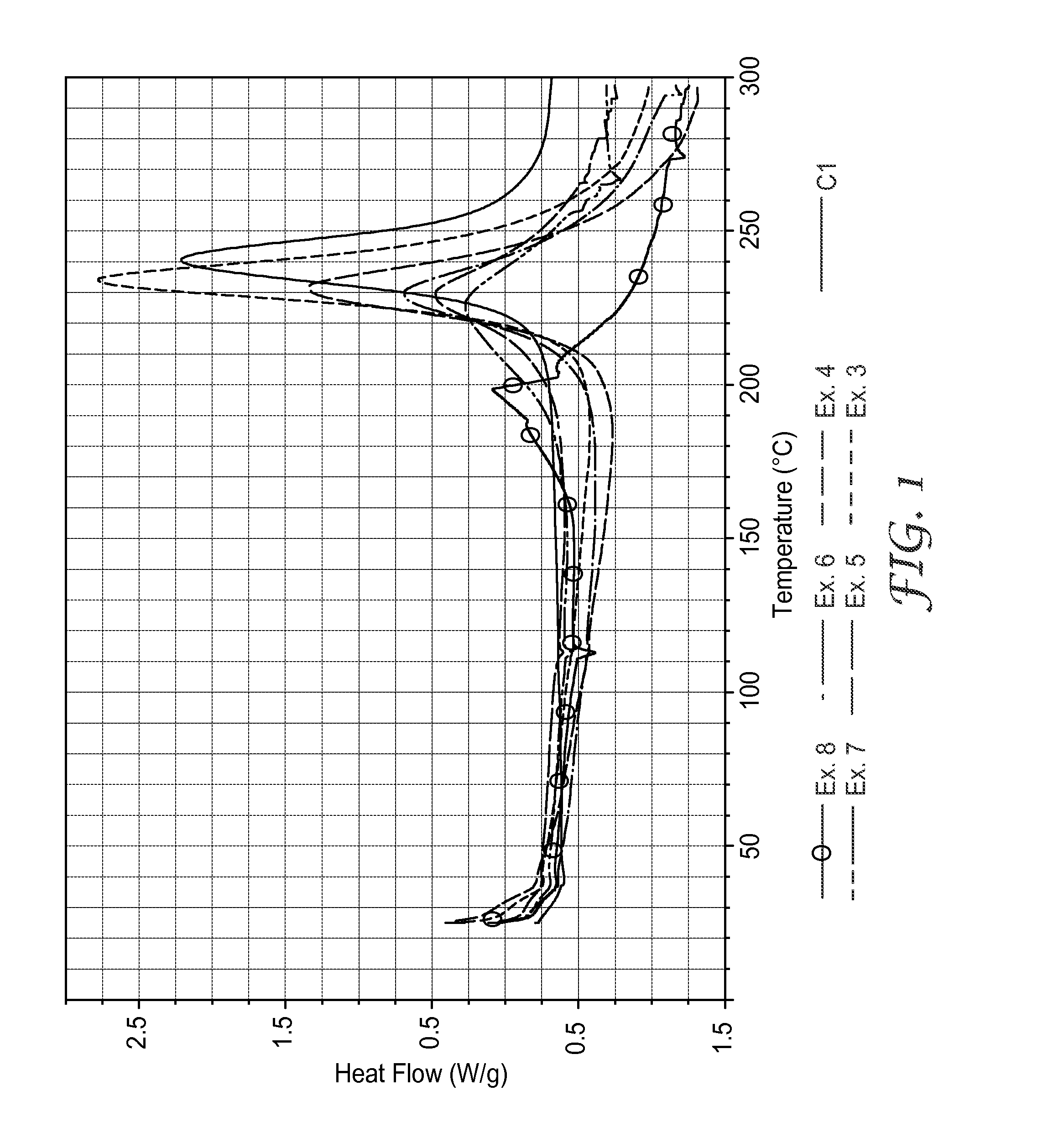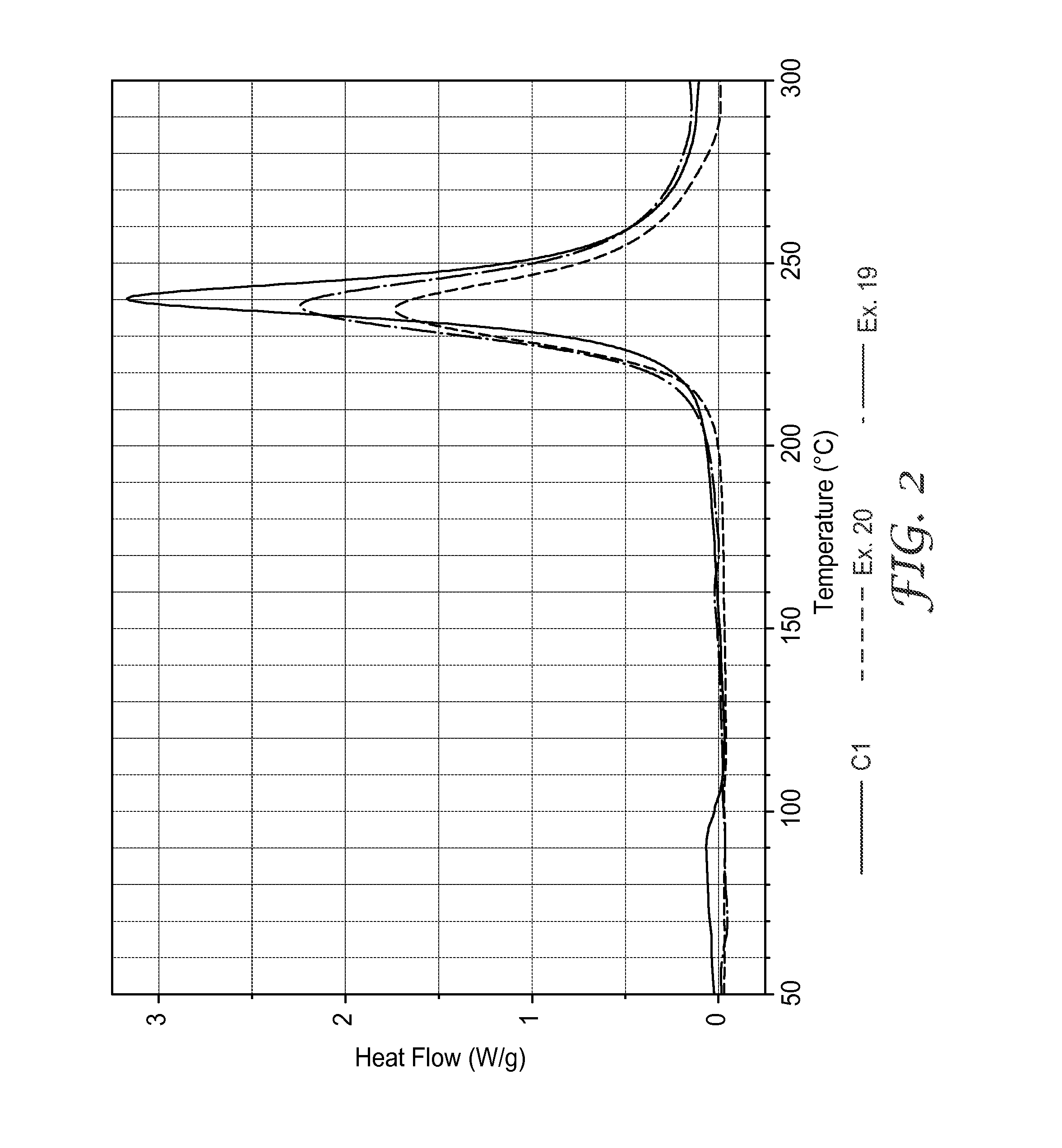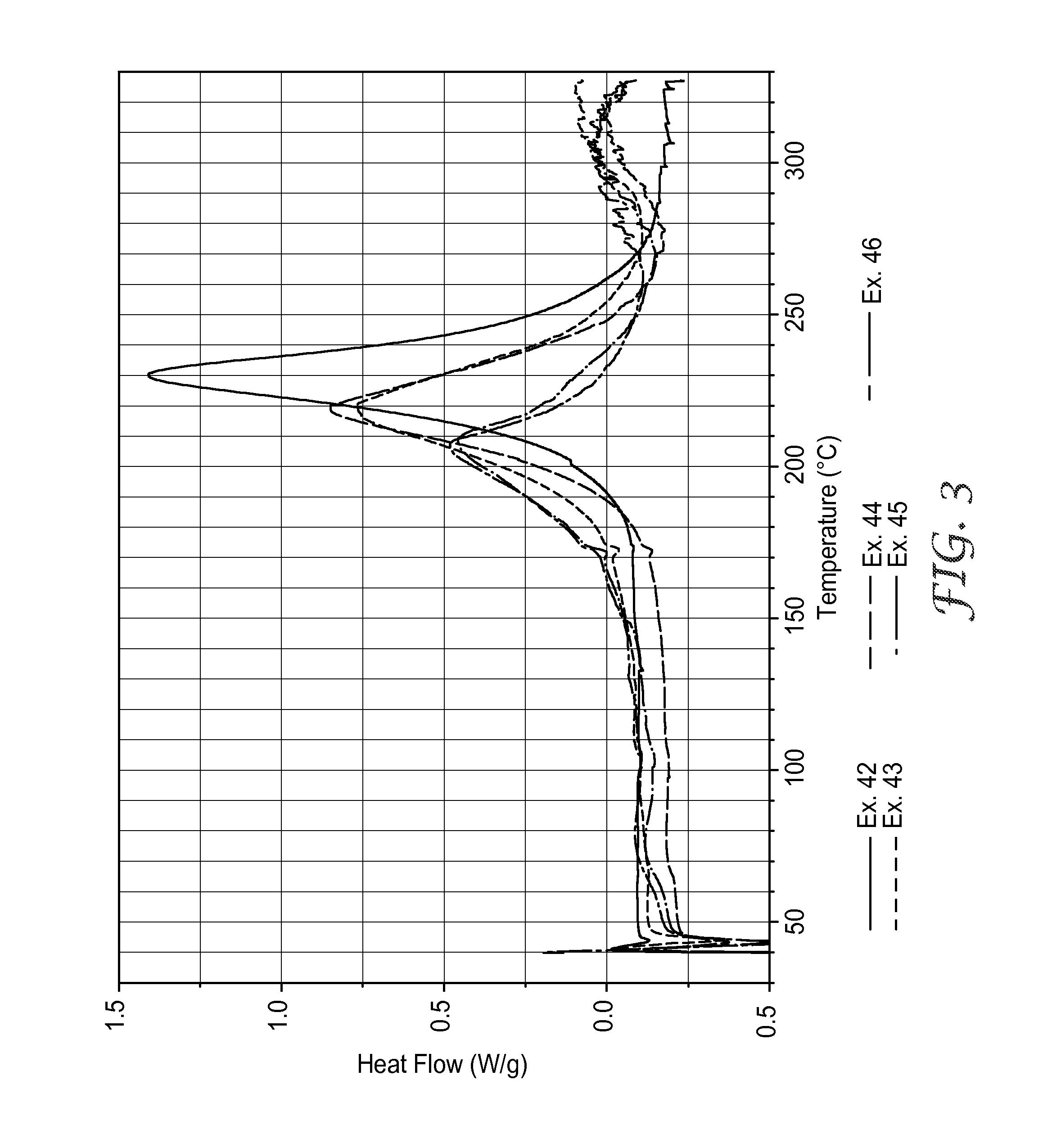Polybenzoxazine composition
a technology of polybenzoxazine and composition, applied in the direction of coatings, adhesives, etc., can solve the problems of limited high temperature stability, high moisture uptake, and limit the use of the produ
- Summary
- Abstract
- Description
- Claims
- Application Information
AI Technical Summary
Benefits of technology
Problems solved by technology
Method used
Image
Examples
example 1
[0145]Powders of finely ground BZ-1 (23.1) and sulfur (3.2 grams) were mixed in equimolar ratios, and stirred and shaken for approximately 1 minute in a Wig-L-Bug shaker. Approximately 15.4 milligrams (mg) of the mixture was heated up to 320° C. in a DSC (Seiko) as described above. The DSC trace showed an exotherm with a high temperature peak at approximately 211° C., a cure onset temperature at ˜140° C., and the total energy released during curing was 221 J / gram. The trace also showed a minor sharp endotherm with a peak at approximately 113° C., corresponding to the reported melting point of sulfur.
example 2
[0146]BZ-2 (33.3 grams) and finely ground sulfur (3.2 grams) were mixed in equimolar ratios and stirred vigorously for approximately 1 minute. Approximately 20.3 mg of the mixture was heated up to 320° C. in a DSC as described in Example 1. The DSC trace showed an exotherm with dual high temperature peaks at approximately 170° C. and 225° C. and a cure onset temperature at ˜130° C. The total energy released during the cure was 221 J / gram. The trace also showed a minor sharp endotherm with a peak at approximately 113° C., corresponding to the reported melting point of sulfur.
examples 9-11
[0150]Molten BZ-3 (2.24 g; 0.01 mol) at 30° C. was mixed with sulfur (0.16 g; 0.005 mol) and the mixture was allowed to react at 170° C. for 1 hour, followed by 14 hours at 150° C., and then cooled to room temperature.
[0151]Example 10 was prepared according to the same procedure except molten BZ-1 (2.31 g; 0.01 mol) at 30° C. and sulfur (0.032 g; 0.01 mol) were used.
[0152]Example 11 was prepared by mixing molten BZ-3 (2.24 g; 0.01 mol) at 30° C. with sulfur (0.32 g; 0.01 mol), allowing the mixture to react at 200° C. for 1 min, and then cooling to room temperature.
[0153]Solutions of each of the reaction products of Examples 9-11 were prepared by dissolving the cooled products in deuterated chloroform at a concentration of 0.3 grams per liter (g / l). The solutions were used to determine 3C and 1H NMR spectra.
[0154]At compositions of 1:1 molar ratios broadened cure exotherm peaks along with a dramatic decrease of released energy therein, suggested that other phenomena occurred in addit...
PUM
| Property | Measurement | Unit |
|---|---|---|
| glass transition temperature | aaaaa | aaaaa |
| glass transition temperature | aaaaa | aaaaa |
| Tg | aaaaa | aaaaa |
Abstract
Description
Claims
Application Information
 Login to View More
Login to View More - R&D
- Intellectual Property
- Life Sciences
- Materials
- Tech Scout
- Unparalleled Data Quality
- Higher Quality Content
- 60% Fewer Hallucinations
Browse by: Latest US Patents, China's latest patents, Technical Efficacy Thesaurus, Application Domain, Technology Topic, Popular Technical Reports.
© 2025 PatSnap. All rights reserved.Legal|Privacy policy|Modern Slavery Act Transparency Statement|Sitemap|About US| Contact US: help@patsnap.com



